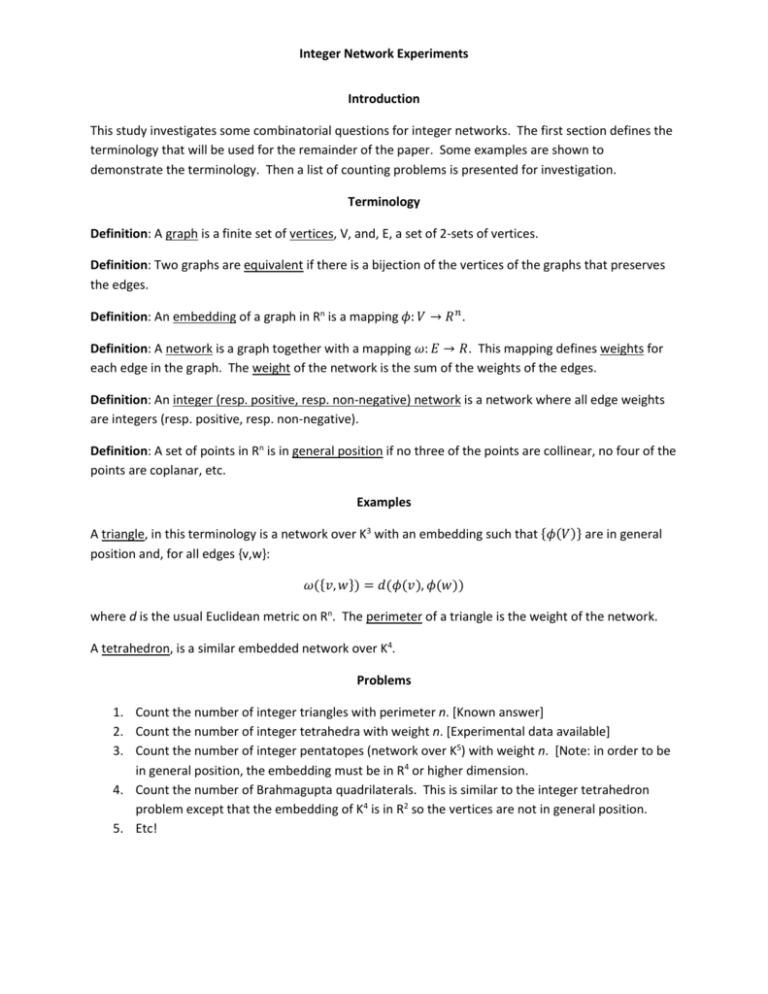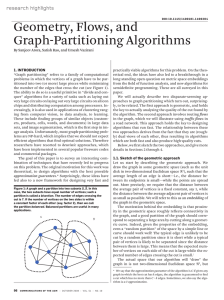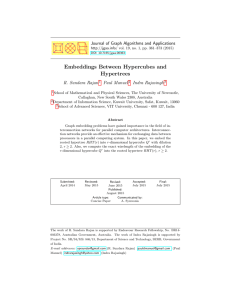problem description
advertisement

Integer Network Experiments
Introduction
This study investigates some combinatorial questions for integer networks. The first section defines the
terminology that will be used for the remainder of the paper. Some examples are shown to
demonstrate the terminology. Then a list of counting problems is presented for investigation.
Terminology
Definition: A graph is a finite set of vertices, V, and, E, a set of 2-sets of vertices.
Definition: Two graphs are equivalent if there is a bijection of the vertices of the graphs that preserves
the edges.
Definition: An embedding of a graph in Rn is a mapping 𝜙: 𝑉 → 𝑅 𝑛 .
Definition: A network is a graph together with a mapping 𝜔: 𝐸 → 𝑅. This mapping defines weights for
each edge in the graph. The weight of the network is the sum of the weights of the edges.
Definition: An integer (resp. positive, resp. non-negative) network is a network where all edge weights
are integers (resp. positive, resp. non-negative).
Definition: A set of points in Rn is in general position if no three of the points are collinear, no four of the
points are coplanar, etc.
Examples
A triangle, in this terminology is a network over K3 with an embedding such that {𝜙(𝑉)} are in general
position and, for all edges {v,w}:
𝜔({𝑣, 𝑤}) = 𝑑(𝜙(𝑣), 𝜙(𝑤))
where d is the usual Euclidean metric on Rn. The perimeter of a triangle is the weight of the network.
A tetrahedron, is a similar embedded network over K4.
Problems
1. Count the number of integer triangles with perimeter n. [Known answer]
2. Count the number of integer tetrahedra with weight n. [Experimental data available]
3. Count the number of integer pentatopes (network over K5) with weight n. [Note: in order to be
in general position, the embedding must be in R4 or higher dimension.
4. Count the number of Brahmagupta quadrilaterals. This is similar to the integer tetrahedron
problem except that the embedding of K4 is in R2 so the vertices are not in general position.
5. Etc!









